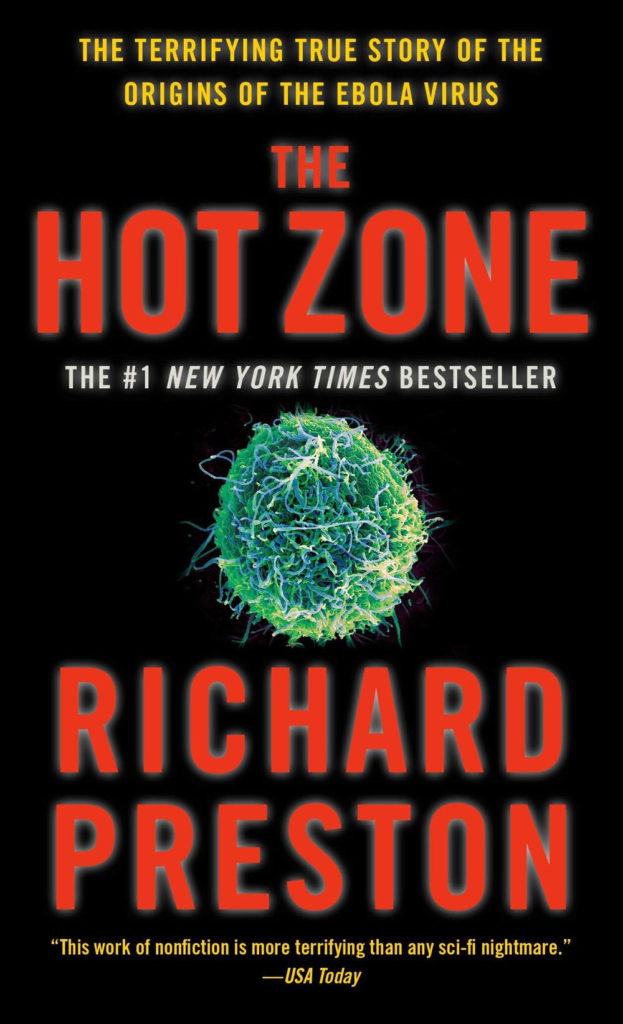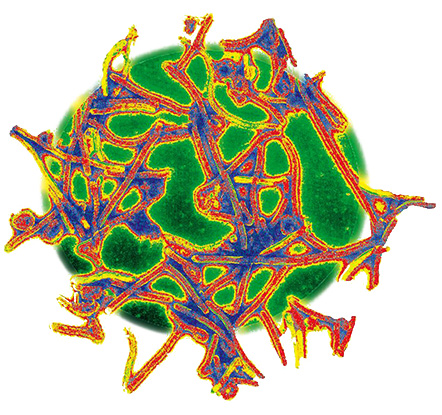
A highly infectious, deadly virus from the central African rain forest suddenly appears in the suburbs of Washington, D.C. There is no cure. In a few days, 90 percent of its victims are dead. A secret military SWAT team of soldiers and scientists is mobilized to stop the outbreak of this exotic “hot” virus. The Hot Zone tells this dramatic story, giving a hair-raising account of the appearance of rare and lethal viruses and their “crashes” into the human race. Shocking, frightening, and impossible to ignore, The Hot Zone proves that truth really is scarier than fiction.
Non-Fiction Book Review Blog: The Hot Zone
Of course, as I pick up this book to read, the world is in the midst of grappling with COVID-19, AKA, the coronavirus. At the time I am writing this review, the death toll as a result of this virus in the United States has reached 17. 3,015 deaths in China and 267 fatalities in other parts of the world, and counting. To say that this virus has captured the attention of millions is an understatement. At both my job and my wife’s, concerns about the spread of the virus have been addressed, and contingencies discussed in preparation for worse-case scenarios should that occur. It is a scary time, and we cannot help but think of the well-being of ourselves and our families, especially our two young daughters, one of whom is yet to be a year old.
The Hot Zone broaches the subject of a deadly contagion and the possible repercussions of such a deadly virus being released on a full scale onto the population. A lengthy chapter one describes in horrid detail such cases. Blood seeps through every orifice of your body, the reddening and bleeding of the eyes, and the deterioration of one’s innards as the virus lays waste and eats you from the inside. I sat and read, wide-eyed, and had to remind myself that what I was reading was not fiction but, instead, a terrifying real account.
The many times that an outbreak was imminent in the book scared me to death. Reading about these brave souls who come face to face (literally) with these level 4 pathogens is staggering and cringe-worthy. Their stories of the close calls of nearly being infected by a deadly disease by being exposed to the very air alongside a contaminant or being pricked by a needle that may or may not be contaminated were absolutely tense and terrifying. I would never put myself in such a situation. The two pathogens that were the key “players” in The Hot Zone were the Marburg and Ebola viruses.
The first thing that came to mind when reading this book was the 1995 film Outbreak. The film focuses on an outbreak of a fictional Ebola-like virus, Motaba, in Zaire and later in a small town in the United States. I was a teenager when the film was released, and my knowledge of such matters was minimal at best. The film opened my eyes to the possibility that such a catastrophic event could actually occur, although I don’t remember seeing such graphic scenes as described in the book. One scene, in particular, that gave me the heebie-jeebies is a scene where an infected person sneezes in a movie theater, and we see the germs spreading and making their way throughout the theater and onto movie-goers. It didn’t help that I watched the film at a movie theater! Much to my surprise, Outbreak is based on this book – go figure! Another film that delves into a global pandemic and will give you reason for concern is the 2011 film Contagion which, in my opinion, better depicted what it would be like in real life.
I can’t say that The Hot Zone was a joy to read, but if you are looking for something frightening to read and want to get away from the fictional ghost stories, thrillers, and slashers, then this is the way to go. But then there is the 2014 article featured in NPR where science writer David Quammen disputes the author of The Hot Zone, Richard Preston, by stating:
“Ebola is not like how it’s portrayed in the book. People do not dissolve. Their internal organs do not liquefy. People do not shed bloody tears.”
Sometimes people with Ebola hemorrhage, but in the majority of cases, there’s no dramatic bleeding, Quammen says. For that reason, “the disease is no longer even classified as a hemorrhagic fever.”
“But Preston’s book has all these vivid, gruesome details, and they have given people an exaggerated idea of Ebola over the years. They caused people to view this disease as though it was some sort of preternatural phenomenon.” *
So did Preston ramp up the gory details to make the book more exciting and terrifying? It’s possible. Did it work? Hell, yes, it did! But what I found more unnerving in this article from 2014 was the following:
Back in August, you told NPR that the Ebola outbreak was a “dress rehearsal” for the next big pandemic, but not the big one. Since then, the epidemic has ballooned about five fold. Do you still feel the same way?
Definitely. We’ve had one case fatality in the U.S. The pandemic is still raging in West Africa and killing people there. We have to help control and stop it.
But Ebola isn’t a respiratory virus. It doesn’t spread through the airborne route. So it’s not likely to spread like wildfire around the world and kill tens of thousands or hundreds of thousands of people. That’s what I think of as the next big one. I think the virus for the next big one is more likely to be an influenza or a coronavirus than it is to be Ebola. *
I’ll just let that last sentence simmer.
* – How ‘The Hot Zone’ Got It Wrong And Other Tales Of Ebola’s History

